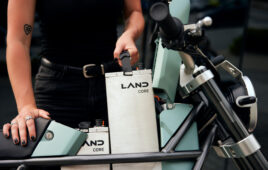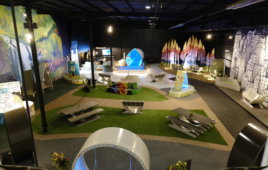
Softwear Automation’s Sewbots can sew a new shirt every 22 seconds.
One of the industries ripe for more sustainability is the clothing/textile business. Fashion for Good is a platform for sustainable innovation that calls for industry-wide collaboration. Their aim is to make all fashion good, through their Accelorator and Scaling programs. According to the organization, on average, consumers purchase 60% more clothing than they did 15 years ago, but those items are only kept for half as long.
Fashion for Good’s definition of the future of manufacturing is: The garment factory of the future will be safe, smart and clean. Garment workers will be upskilled from the sewing lines into new positions, where they are paid enough to thrive, not just survive. Innovations in automation, made-to-measure and 3D printing will make zero-waste manufacturing the norm.
Here are four examples of current innovators:
Softwear Automation — This company has created Sewbots, autonomous robots that use patented robotics and revolutionary machine vision to move fabric to and through the needle quickly and efficiently, without the need for human hands. How quickly? Sewbots can sew a new shirt every 22 seconds, allowing for on-demand manufacturing that cuts back on inventory and waste.
Reverse Resources — An estimated 15-20% of material is wasted when clothes are manufactured. Typically, this material is burnt, sent to a landfill, or recycled into low-quality output like insulation. Textile recycling technologies exist and are getting even better through innovation — but one problem is that fabric mills, garment factories, traders, textile recyclers and brands don’t have an efficient way to talk to each other in order to put textile waste back into the production process. Reverse Resources in Estonia is out to help solve this pain point. They are creating a system to map, measure and track leftover textiles from garment manufacturing. Their system features a transparent, data-driven marketplace that connects different actors in the supply chain. This increases visibility and makes it easier for recyclers to access textile waste so that it can ultimately be turned into new products and yarns.
Scalable Garment Technologies Inc. — This Canadian company envisions a world where all clothing is created on demand. Through its knitwear manufacturing platform, brands and retailers would first design a garment. Then, customers would be able to personalize the size, fit and material. Finally, SGTi would manufacture the custom garment on its 3D knitting machines. SGTi’s ultimate goal is to create high-quality clothing that fits and is produced quickly, affordably and sustainably. Not only will this result in dramatically less waste from unsold clothes, but it will also cut time and cost for the manufacturer.
Tamicare — This U.K. company has developed Cosyflex, the world’s first fully automated 3D-printing technology for apparel and footwear. The Cosyflex machine “sprays” colored fibers and polymers layer-by-layer, so an item can go from raw material to finished garment in as little as three seconds, depending on what it is. With Cosyflex, manufacturers can eliminate many of the typical steps involved in creating clothes, like spinning, weaving, knitting and cut-and-sew. This opens them up to become more efficient, produce on-demand and open production hubs that are closer to shoppers. There are also many environmental benefits. Compared to the traditional way of doing things, Cosyflex eliminates cutting waste, reduces the amount of chemicals and water needed to dye fabrics and can use mechanically-recycled fibers.
Fashion for Good
fashionforgood.com
Filed Under: Green engineering • renewable energy • sustainability




